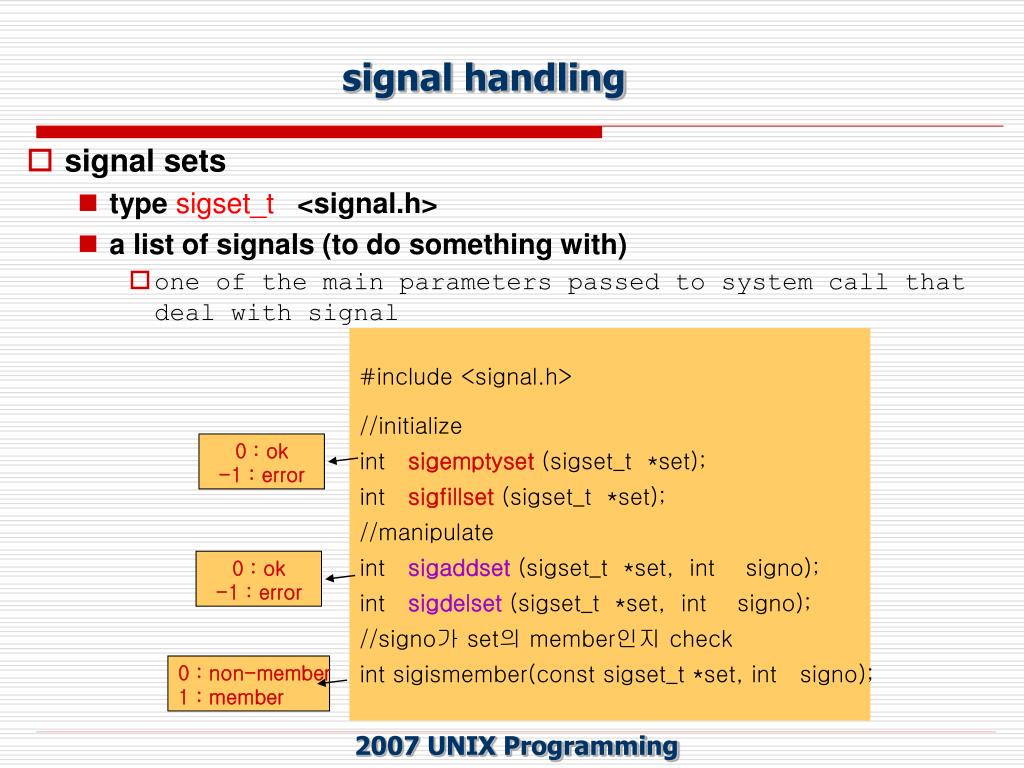

The possible values for which, which are defined in the < sys/time. Parameters which (Input) The interval timer type.

Its manpage refers to the sigaction function (read man sigaction), which behaves consistent, and is also more powerful. The getitimer () function returns the value last used to set the interval timer specified by which in the structure pointed to by value. In different unix's, that function behave different, so its usage is discouraged. At each expiration, a SIGALRM signal is generated.
#UNIX SIGNALS ITIMER CODE#
There is a ANSI C standard function that installs a signal handler, which is a function that can execute some code when receiving a signal, called signal (read in man signal). Three types of timersspecified via the which argumentare provided, each of which counts against a different clock and generates a different signal on timer expiration: ITIMERREAL This timer counts down in real (i.e., wall clock) time. For example on receive of a SIGSEGV, the program terminates, while receiving a SIGCHLD, meaning a child-process died, will by default result in nothing special. There are default actions taken for some signals and other signals are just ignored. The Unix man page for ‘ signal() ’ lists the existing signals (on some systems this is signal(2), on others the list is in signal(7)).
For example, the hangup signal is defined as signal.SIGHUP the variable names are identical to the names used in C programs, as found inSome unix servers use signals so the administrator can use kill to send them a signal, causing them to re-read their configuration file, without requiring them to restart. All the signal numbers are defined symbolically. The operation system can use it to notify programs about abortions of them (signal SIGABRT) or about a segmentation fault (often caused by accessing a null-pointer, SIGSEGV), to name two of them. Typical applications will provide a signal handler to handle to configure it for the desired. ITIMERPROF timers decrement both during user space execution of the process and when the OS is executing on behalf of the process i.e.
#UNIX SIGNALS ITIMER MANUAL#
The manual refers to a very basic mechanism that allow processes or the operation system to notify other processes by sending a signal. The signal module provides support for Unix signal handlers. So we can expect that realsignals > virtualsignals.


 0 kommentar(er)
0 kommentar(er)
